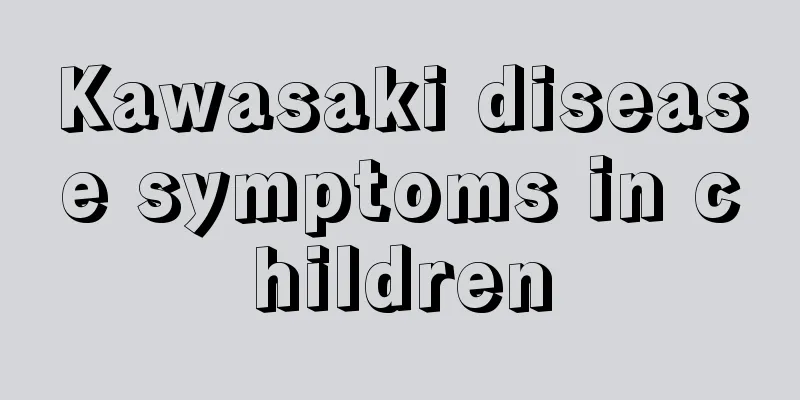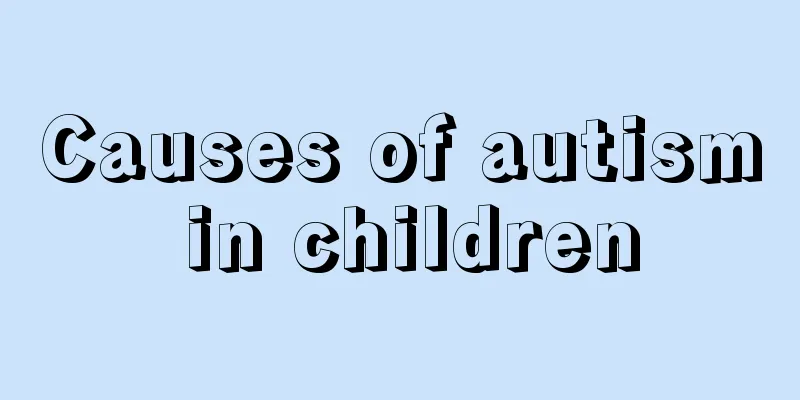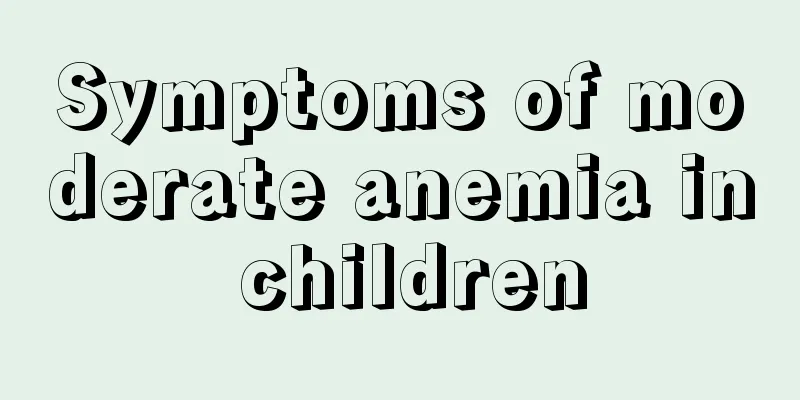Kawasaki disease symptoms in children

|
Kawasaki disease is a common disease in children. It is also contagious. When the disease occurs, patients often have a fever, which is quite serious. Therefore, children must be treated actively, otherwise they may suffer from sequelae. When the fever occurs, attention should be paid to whether the patient's eyeballs are congested. So what are the symptoms of Kawasaki disease in children? The main symptoms of Kawasaki disease in children are: persistent high fever is the characteristic of the acute phase. Typical fever usually starts rapidly with a fever as high as 39°C or above and presents as a remittent fever. If not treated promptly, the high fever can last for 1 to 2 weeks and sometimes up to 3 to 4 weeks. On the other hand, if intravenous immunoglobulin and high-dose aspirin are used promptly, the fever usually subsides within 1 to 2 days. Bilateral conjunctival congestion often occurs 24 to 48 hours after the fever. Conjunctival congestion is more common than palpebral conjunctiva, especially around the conjunctiva. Generally, there is no secretion. Slit lamp examination can reveal anterior uveitis Guidance: Continuous high fever is a characteristic of the acute phase. Typical fever usually has an acute onset, with a fever as high as 39°C or above and a remittent fever. If not treated promptly, the high fever can last for 1 to 2 weeks, sometimes up to 3 to 4 weeks. On the other hand, if intravenous immunoglobulin and high-dose aspirin are used promptly, the fever usually subsides within 1 to 2 days. Bilateral conjunctival congestion often occurs 24 to 48 hours after the fever. Conjunctival congestion is more common than palpebral conjunctiva, especially around the conjunctiva. Generally, there is no secretion. Slit lamp examination can reveal anterior uveitis Kawasaki disease is a vasculitis syndrome also known as mucocutaneous lymph node syndrome. The biggest harm of Kawasaki disease is damage to the coronary arteries. It is the main cause of coronary artery disease in children and a potential risk factor for coronary heart disease in adulthood. Kawasaki disease, also known as mucocutaneous lymphadenopathy, invades small and medium-sized blood vessels throughout the body and causes vasculitis. Diagnostic criteria include A persistent high fever (39-40°C) for more than five days is necessary for a diagnosis of Kawasaki disease. In the acute phase, redness and swelling appear on the extremities of the hands and feet. During the second to fourth week, peeling may occur on the soles of the hands and feet, fingertips, and around the anus. Erythema multiforme, various macules may appear all over the body. Bilateral conjunctivitis with conjunctival hyperemia, redness, and usually no discharge. Oral mucosal changes, such as strawberry tongue, congestion of the oral and pharyngeal mucosa, red, swollen, cracked lips, and even bleeding Acute non-suppurative cervical lymphadenopathy, unilateral or bilateral, with a diameter of more than 1.5 cm. At least four of the above requirements (ii) to (vi) must be met, plus the fever lasts for more than five days, and other diseases that can cause similar symptoms can be ruled out, in order to be correctly diagnosed as Kawasaki disease. Other common clinical manifestations include: redness, swelling and even scabs may appear at the site where the BCG vaccine is injected; blood tests may show anemia, leukocyte and thrombocytosis, increased inflammatory index (ESR, CRP), and sterile pyuria. These findings increase the likelihood of Kawasaki disease. |
<<: Should children's decayed teeth be extracted?
>>: Symptoms of precocious puberty in little boys
Recommend
What are the symptoms of red and swollen baby fingers?
What are the symptoms of red and swollen baby'...
How much milk does your baby drink?
The amount of milk a baby drinks depends on the b...
What’s a good way to treat children’s recurring high fever?
Many parents are very worried about their childre...
Why does my baby cough with phlegm and hoarseness?
Babies are still young, and their immune function...
The child has small red bumps all over his body
Children themselves have weaker resistance, so pa...
Can a 7 month old baby eat noodles?
Noodles are a common food in our lives, and there...
What should I do if my child urinates frequently and urgently?
Frequent urination and urgency are common disease...
What to do if your baby is bitten by a poisonous insect
Summer is here, and as the temperature rises, bab...
What is the reason for the child to have a fever every two or three days?
If a child has a fever every other day, the most ...
What to do if your three-year-old baby coughs in the middle of the night
We all know that coughing is a common upper respi...
What should I do if my child has a runny nose due to heat?
When seeing their children with a runny nose, mos...
How to treat congenital amblyopia in children?
Amblyopia refers to the absence of obvious organi...
What to do if your child has a stomachache
Children often have stomachaches because they are...
Is it normal for children to sweat during exercise?
Children are naturally active, so they love to pl...
How effective is ginger for baby's nasal congestion?
With the arrival of winter, the temperature will ...









